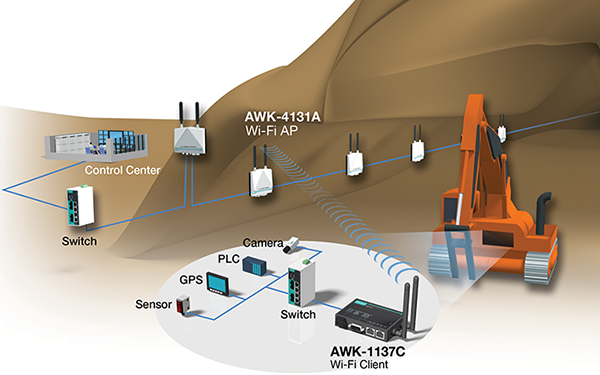The mining industry is turning over a new leaf by digitizing mining operations. Increased competition in the global mining and metals market is compelling mine operators to rethink their operational strategies and increase safety and accuracy in their mines. Changing how material is transported, reducing staff exposure to on-site hazards, minimizing damage to mining equipment, and optimizing production are some of the strategies used by mine owners to increase profitability. Autonomous mining equipment and vehicles, such as trucks, controlled by operators in the control room, are being used to transport material from underground tunnels up to the ground level. The first step to realizing the benefits of autonomous mining equipment is to embrace technologies that can facilitate their smooth movement and control.
Working Around Communication Barriers in Underground Mines
Digital transformation of their mines is a key priority for most mine owners. However, implementing new processes and deploying equipment requires a fundamental shift in their mindset. Cabling constraints while connecting equipment to the control center and interferences from the hazardous mining environment often disrupt communication with the control center, resulting in reduced operational efficiency. Another key challenge is ensuring that networking devices are rugged enough to be deployed in underground mines to ensure continuous production.
Wireless Technology Helps Tackle These Challenges
Wireless technology has helped the mining industry overcome the communication barriers presented by the harsh conditions in underground mining tunnels. Unmanned operations performed by autonomous drilling rigs, mining trucks, and loaders have reduced the number of operators and drivers working in these hostile and remote conditions, thereby increasing operational safety, accuracy, and efficiency, and helping reduce costs. These driverless drilling rigs, mining trucks, and loaders rely on wireless networks to enable operators to remotely control and monitor mining operations from the safety and comfort of their control rooms.
The Key Requirements for Monitoring and Control
A mining automation solution provider was looking for a reliable wireless communication solution to enable their clients to efficiently manage mining equipment and improve productivity. The key requirements included:
A Reliable and Robust Wireless Network: Underground mining tunnels require a reliable and robust wireless network to enable machine operators to remotely control and monitor drilling rigs, mining trucks, and loaders to facilitate real-time data communication between the unmanned mobile vehicles and the operator in the control centre.
Seamless Roaming: Seamless roaming between access points (APs) is a must to ensure connectivity for client devices onboard autonomous drills and haulage vehicles that are constantly on the move inside the underground mining tunnels.
Real-Time Data: In order to monitor the status of the driverless vehicles, a real-time solution for data acquisition and the ability to communicate with multiple PROFINET-based devices transparently for real-time control become essential.
Industrial-Grade Compact Wireless Devices: Last but not least, industrial-grade design ensures reliable performance in harsh environments and compact devices make it easy to deploy them on drilling rigs and mining trucks. Wireless clients that are so deployed can be remotely accessed by operators in the control room. Furthermore, the wireless devices must be equipped with anti-vibration design to ensure seamless wireless device operation under continuous mobile conditions.
The Solution
The equipment manufacturer installed Moxa’s compact-sized industrial-grade AWK-1137C clients with an anti-vibration design on the drilling rigs and mining trucks to be able to remotely access them from the control room. The AWK-1137C clients uplink large volumes of data and live video streams from each of these driverless vehicles to the operator station through the wireless access network. AWK-4131A APs were installed along the tunnel walls to provide maximum wireless coverage for the AWK-1137C clients. AWK-4131A APs provide 802.11n MIMO coverage on standard 2.4 GHz, 5 GHz, and 5 GHz DFS channels to maximize radio performance and to reduce interference caused by the hard rock walls of the mines.

The key highlights of Moxa’s wireless solution are:
- Turbo Roaming’s millisecond-level handoff times, coupled with 802.11n MIMO and 5 GHz DFS support, ensure seamless live video streaming from the vehicles while they are on the move
- Master/slave connections enable transparent PROFINET communication
- Access points with IP68-rated weatherproof housing and -40 to 75°C operating temperatures are suitable for outdoor applications
- Anti-vibration design that meets the requirements of the IEC 60068-2-6 standard provides protection against interference caused by mining activities
For additional details on this case and to read about other successful implementations in various mission-critical industrial applications, download our Case Study Guidebook.